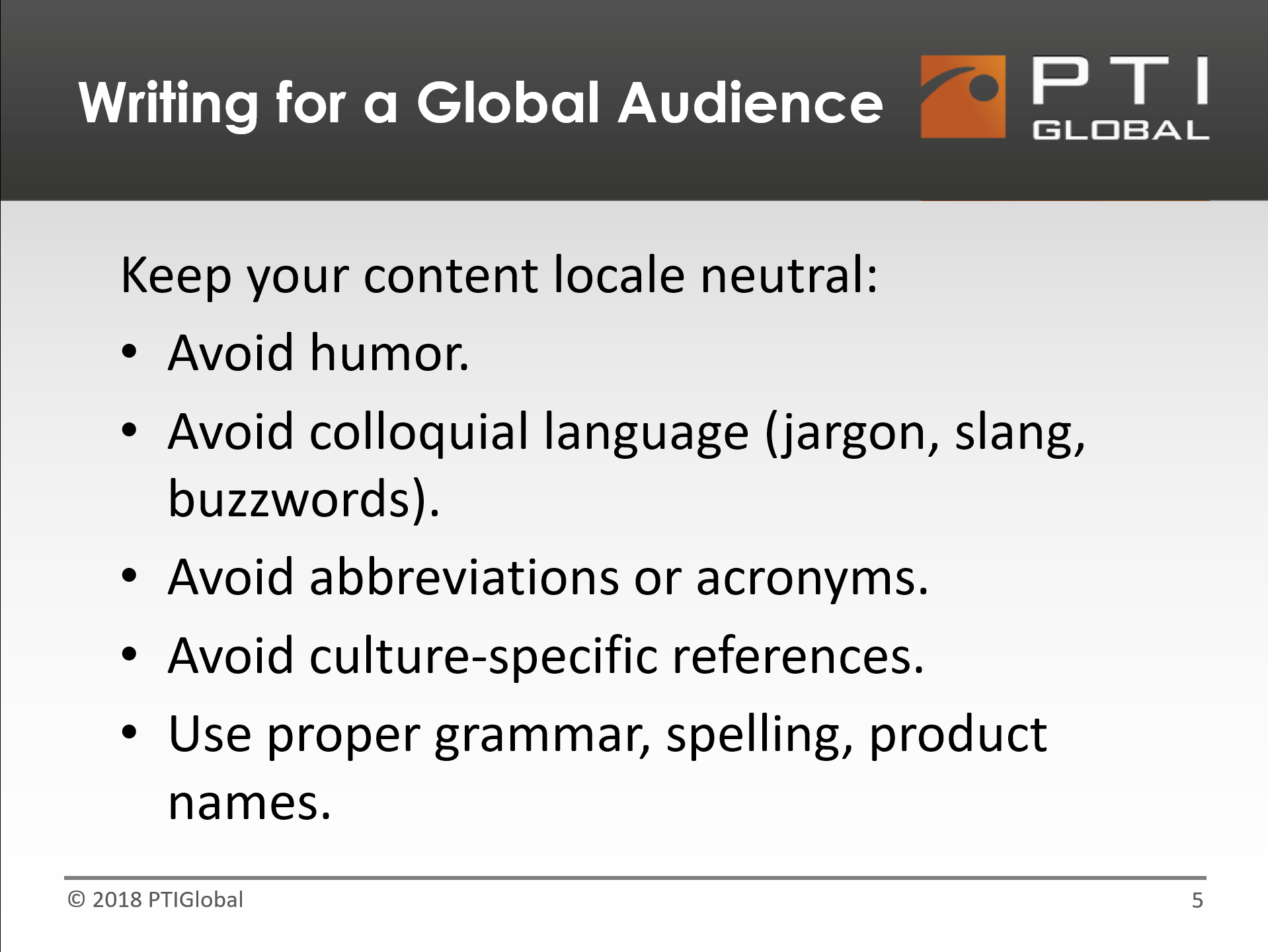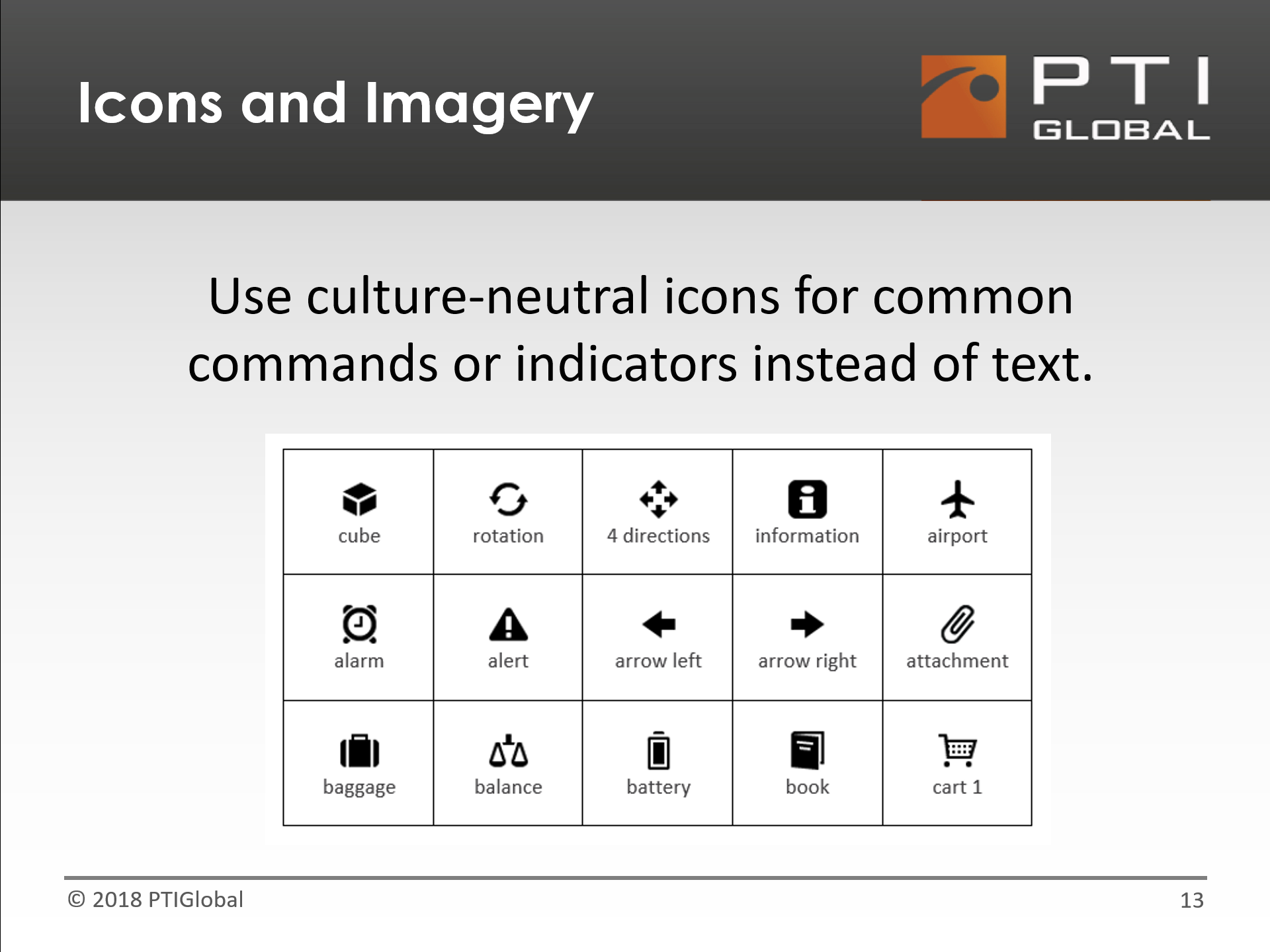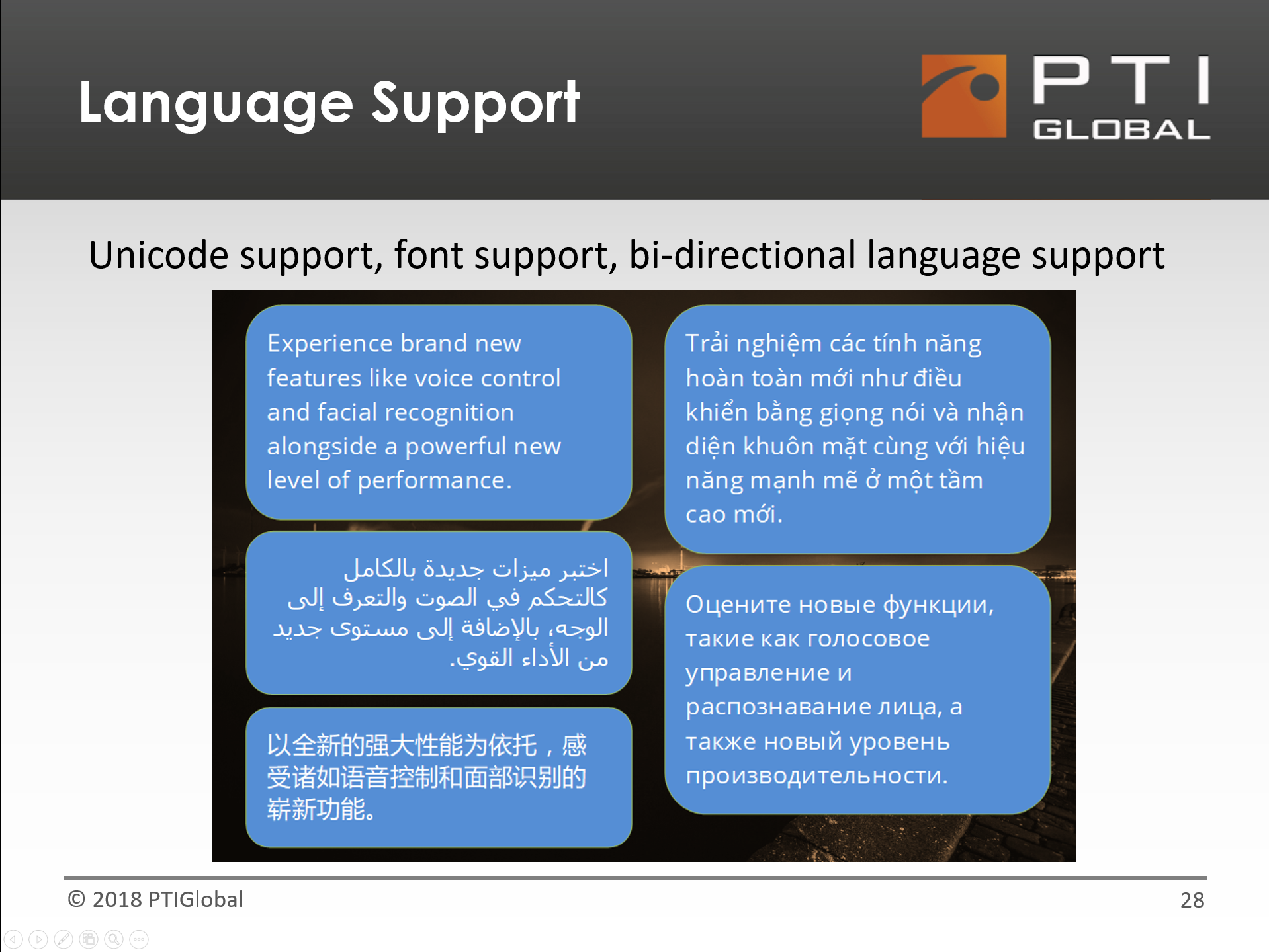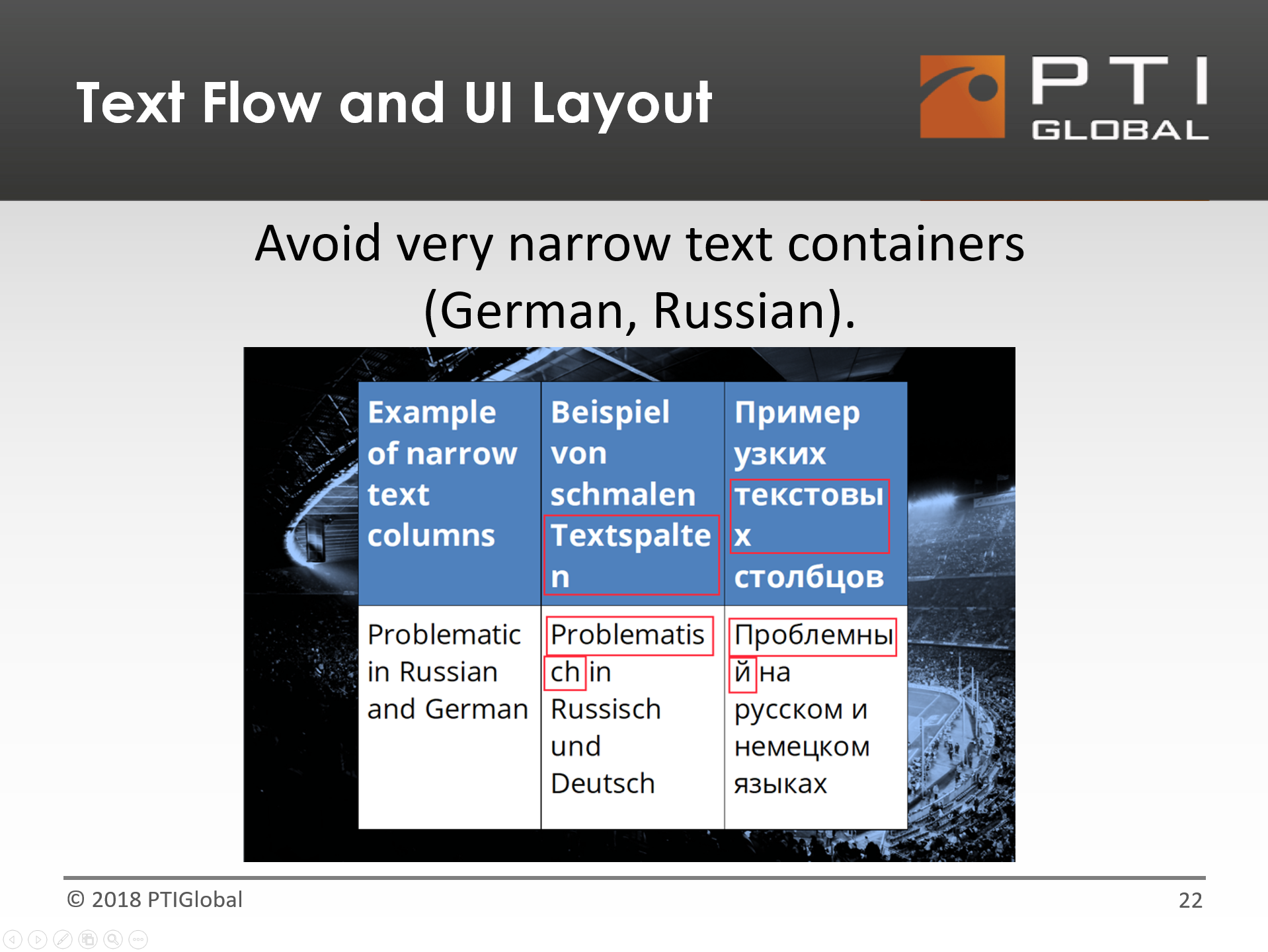Is Your Learning Content Ready for the World?

When creating learning content for your company’s employees, the consumers of your products, or the general public, and you are planning on translating your training modules into other languages, special attention needs to be paid to internationalization guidelines. Our localization experts have put together a set of “best known methods” to follow to make your courses localization ready.
We are making the complete set of guidelines available to anybody who is interested. Please contact PTIGlobal by web form or email to getstarted@ptiglobal.com to receive the complete slide set.
Here are a few of the most important considerations:
Guideline #1: Pay attention to the writing style for all audiences
Even when the training is not going to be translated, there are some guidelines to follow to make the content appropriate for a worldwide audience.
Guideline #2: Additional style considerations when translating the training
Clarity and simplicity are important when writing for localization, and following these guidelines will make the translators’ job easier.
Guideline #3: Icons and imagery
Keeping icons and imagery as neutral as possible is important for information to be globally understood and avoiding controversy.
Guideline #4: Support for languages and typefaces
You need to verify that your authoring tools and output formats properly supports languages, text direction, and fonts required to display the text.
Guideline #5: Text flow and UI layout – narrow columns
There are many potential designs that can cause text flow and layout issues, especially in languages that require extra space and use very long words.
These are just five of over 25 guidelines to be aware of. The more closely they are followed, the easier and cheaper localization will be, and your global audience will have a positive and complete learning experience. Get the entire slide set today by sending us a message by web form or email to getstarted@ptiglobal.com.





